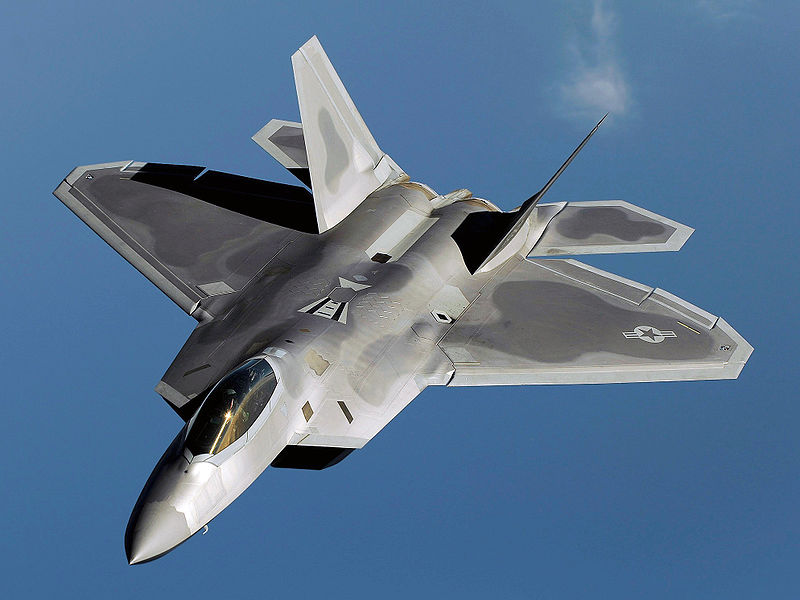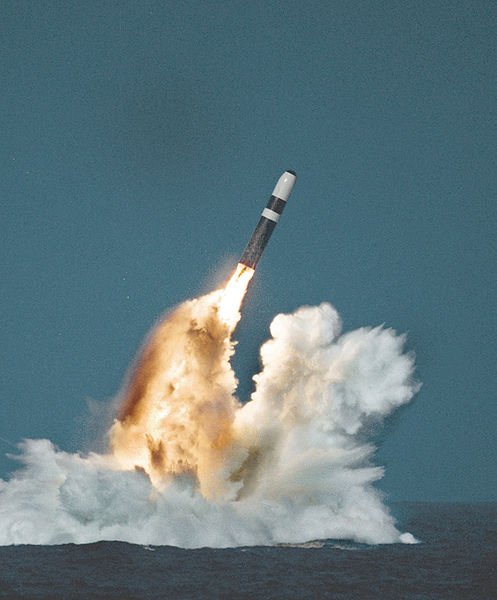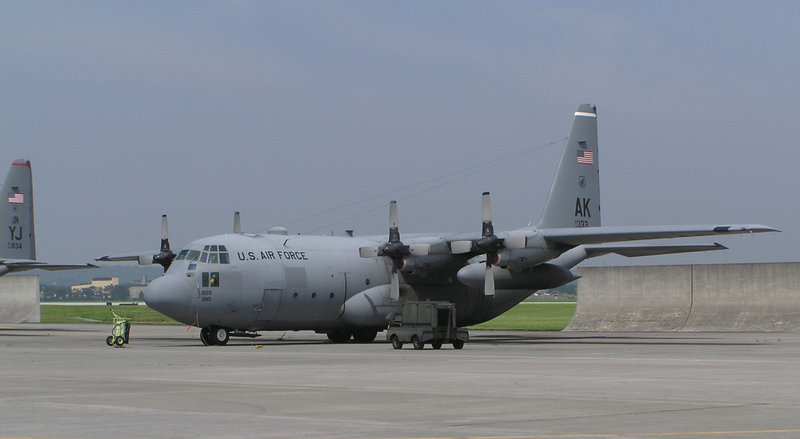
Lockheed Martin is a public global security company headquartered in Bethesda, MD which is principally engaged in the research, design, development, manufacture, integration and sustainability of advanced technology systems, products and services. Based in the U. S. it has varied worldwide interests on areas such as aerospace, defense, security, and advanced technology.
Formed in 1995, Lockheed Martin was the merger of Lockheed with Martin Marietta in March 1995. The headquarters is located at Bethesda, Maryland, in the Washington Metropolitan Area. Lockheed products included the Trident missile, P-3 Orion, F-16 Fighting Falcon, F-22 Raptor, C-130 Hercules, A-4AR Fighting hawk and the DSCS-3 satellite. Martin Marietta products included Titan rockets, Sandia National Laboratories, Space Shuttle External Tank, Viking 1 and Viking 2 landers, the Transfer Orbit Stage and various satellite models.
Lockheed Martin completed the acquisition of Loral Corporation’s defense electronics and system integration businesses for $9.1 billion on April 22, 1996. Due to government concerns over the potential strength of the new group; Lockheed Martin abandoned plans for a $8.3 billion merg er with Northrop Grumman on July 16, 1998. The company provided NASA with measurements in imperial force units when metric was required, resulting in the loss of the Mars Climate Orbiter at a cost of $125 million. In May 2000, Lockheed Martin sold Lockheed Martin Control Systems to BAE Systems. On November 27, 2000; Lockheed also sold its Aerospace Electronic Systems business to BAE Systems for $1.67 billion.
er with Northrop Grumman on July 16, 1998. The company provided NASA with measurements in imperial force units when metric was required, resulting in the loss of the Mars Climate Orbiter at a cost of $125 million. In May 2000, Lockheed Martin sold Lockheed Martin Control Systems to BAE Systems. On November 27, 2000; Lockheed also sold its Aerospace Electronic Systems business to BAE Systems for $1.67 billion.
In 2001, Lockheed Martin won the contract to build the F-35 Lightning II; with an initial order of 3,000 worth $200 billion before export orders.
Lockheed Martin settled a nine year investigation conducted by NASA’s Office of Inspector General with the assistance of the Defense Contract Audit Agency later in 2001 and paid the United States government $7.1 million based on allegations that its predecessor, Lockheed Engineering Science Corporation, submitted false lease costs claims to NASA.
On August 31, 2006, Lockheed Martin won a $3.9 billion contract from NASA to design and build the CEV capsule, the next spacecraft for human flight for the Ares I rocket in the Constellation Program.
Lockheed Martin acquired the government business unit of Nantero, Inc., a company that had developed methods and processes for incorporating carbon nano tubes in next-generation electronic devices on August 13, 2008.
It is the world’s leading military contractor as well as the world’s largest arms exporter. Lockheed Martin built the U-2 and the SR-71 Blackbird spy planes. Today they make F-16, F/A-22 jet fighter, Hellfire and Javelin missiles, as well as design nuclear weapons. Its F-117 stealth attack fighters were used to ‘target’ Iraq at the start of the US invasion, while since the start of that war the Air Force has increased production of Lockheed’s PAC-3 Patriot missile – which cost $91 million each.
 The company has also gained popularity among the common man after controversies regarding its lobbying were brought out. Lockheed Martin spent more than $9.8 million lobbying members of Congress and the Clinton administration, more than double the $4.2 million the company spent during 1999. The company is also accused to have made millions through insider trading, falsifying accounts, and bribing officials. Lockheed has also been able to exercise its influence in a larger way by supporting the invasion of Iraq. The company’s former vice-president Bruce Jackson chaired the Coalition for the Liberation of Iraq, a bipartisan group formed to promote Bush’s plan for war in Iraq. He was also involved in corralling the support for the war from Eastern European countries.
The company has also gained popularity among the common man after controversies regarding its lobbying were brought out. Lockheed Martin spent more than $9.8 million lobbying members of Congress and the Clinton administration, more than double the $4.2 million the company spent during 1999. The company is also accused to have made millions through insider trading, falsifying accounts, and bribing officials. Lockheed has also been able to exercise its influence in a larger way by supporting the invasion of Iraq. The company’s former vice-president Bruce Jackson chaired the Coalition for the Liberation of Iraq, a bipartisan group formed to promote Bush’s plan for war in Iraq. He was also involved in corralling the support for the war from Eastern European countries.
In 1976 Lockheed paid millions of dollars to Japanese government officials to smooth the way for the sale of Lockheed’s airplanes to a Japanese airline corporation called All Nippon Airways. They paid Japanese gangster Kodama Yoshio $2.1 million in payoffs to help them sell their new wide-bodied passenger airplane, the TriStar L1011, against stiff competition from Boeing and McDonnell-Douglas.
Lockheed Martin is the world’s second largest defense contractor by revenue as of 2008 and 70% of its revenues came from arms sales. Prior to this in 2005, 95% of Lockheed Martin’s revenues came from the United States Department of Defense, other U.S. federal government agencies, and foreign military customers.
The company has received the Collier Trophy twice – in 2001 for being part of developing the X-35/F35B Lift Fan Propulsion System and again in 2006 for leading the team that developed the F-22 Raptor fighter jet.
It employs about 136,000 people worldwide. Robert J. Stevens is the Chairman and CEO. Your browser may not support display of this image.
The other key position holders in the company are: Christopher E. Kubasik, President and Chief Operating Officer, Bruce L. Tanner, Executive Vice President and Chief Financial Officer and Ralph D. Heath,Executive Vice President,Aeronautics.
Prominent women in the board are: Linda Gooden, Executive Vice President, Information Systems & Global Services, Marillyn A. Hewson, Executive Vice President, Electronic Systems and Joanne M. Maguire, Executive Vice President, Space Systems.



The following units are a part of the Lockheed Martin Corporation:
Aeronautics:
- Lockheed Martin Aeronautics
- Lockheed Martin Aircraft and Logistics Centers
Electronic Systems
- Lockheed Martin Canada
- Lockheed Martin Mission Systems and Sensors
- Lockheed Martin Missiles and Fire Control
- Lockheed Martin Simulation, Training and Support
- Lockheed Martin Systems Integration – Owego
- Lockheed Martin Advanced Technology Laboratories
- Sandia Corporation
Information Systems and Global Services
- Lockheed Martin IS&GS-Civil
- Lockheed Martin IS&GS-Defense
- Lockheed Martin IS&GS-Security
- Lockheed Martin IS&GS-Global
- Lockheed Martin IS&GS Readiness & Stability Operations
- Lockheed Martin IS&GS Enterprise Integration
- Lockheed Martin Technology Ventures
Space
- Lockheed Martin Space Systems
The company also has entered into joint ventures with:
- International Launch Services (with Khrunichev, RSC Energia)
- Lockheed Martin Alenia Tactical Transport Systems (with Finmeccanica-Alenia, now folded)
- MEADS International with EADS and MBDA
- Space Imaging (46%, remainder public)
- United Launch Alliance (with Boeing)
- United Space Alliance (with Boeing)
- Kelly Aviation Center (with GE and Rolls-Royce)
- Protector USV – an unmanned surface vehicle with RAFAEL Armament Development Authority and BAE Systems
- Defense Support Services (DS2) with Day & Zimmermann
Other areas of business include:
- LMC Properties
- Lockheed Martin Aircraft Argentina SA (formerly Fabrica Militar de Aviones)
- Lockheed Martin Enterprise Business Services
- Lockheed Martin Finance Corporation
- Lockheed Martin U.K.
Lockheed Martin’s space system is involved in the design, integration, and production of:
- Satellites for commercial and military space
- Missile defense systems
- Strategic missile systems
- Orion, crew module for the NASA Constellation Program
- Space Shuttle External Tank
Lockheed Martin produced the first-ever hit-to-kill intercept of a ballistic missile target in 1984 with the Homing Overlay Experiment. Further enhancements produced today’s PAC-3 Missile, which won a competition in 1993 to become the first hit-to-kill interceptor produced by the U.S. government.
Recently on May 13, 2010 Lockheed Martin signed a 215 million dollar contract to build Vietnam’s second satellite.
Customer base: Concentrated on global security and information technology, majority of Lockheed Martin’s business is with the U.S. Department of Defense and the U.S. federal government agencies. It is the largest provider of IT services, systems integration, and training to the U.S. Government. The remaining portion of Lockheed Martin’s business is comprised of international government and some commercial sales of our products, services and platforms.
Lockheed Martin’s Aeronautics operating unit has approximately $12.2 billion sales in 2009 including tactical aircraft, airlift, and aeronautical research and development.
Systems Integration Lab
Lockheed Martin opened the first-ever A-10 Systems Integration Lab (SIL) in February 2004. The SIL duplicates the aircraft’s wiring and cabling infrastructure and is outfitted with actual weapons hardware, missile seekers, suspension racks and rocket launchers to emulate an A-10 aircraft on the flight line.
The Precision Engagement program has benefited significantly during systems development by allowing pilots and engineers to “fly and fix”; software and hardware updates in the SIL before aircraft installation and test.
Advanced Composite Cargo Aircraft
Lockheed Martin’s famed Advanced Development Programs known as Skunk Works, selected by the United States Air Force Research Laboratory build X-Planes with new materials and innovative designs like super lightweight and super strong composites.
The use of composites in aircraft manufacturing will create lighter, less expensive, and more durable aircraft with feasible maintenance costs. Once the Advanced Composite Cargo Aircraft is proven it will be applied to other next-generation aircraft including combat aircraft for vehicles being employed by U.S. and allied forces.
Missiles & missile defense
Lockheed Martin is also a global leader in the design, development and production of missiles and missile defense solutions for the United States and its allies. It aims to defend against attacks by ballistic missiles, cruise missiles and other airborne threats.
Lockheed Martin has a long history of providing its customers with affordable missile and missile systems. Lockheed Martin provides a wide variety of highly effective and reliable weapons systems including precision strike weapons with long standoff ranges, smart sub-munitions to give the war fighter maximum flexibility and guided munitions to dominate the battlefield.
Other Lockheed Martin systems include air-to-air missiles, helicopter launched anti-armor missiles to destroy enemy tanks and shatterproof vehicles; man-portable short-range anti-armor and assault weapons; kinetic energy hyper-velocity missiles that can defeat all armored threats, hit-to-kill air defense systems which protect the troops from ballistic missiles, cruise missiles, enemy aircraft and weapons of mass destruction. The missile capabilities include:
- Air-to-Air Missiles
- Anti-Armor Missiles
- Fire Support
- Precision Strike
- Strategic Systems
Lockheed Martin contributes to every U.S. land-based, airborne, sea- and space-based missile defense initiative; and consults on air and missile defense issues with U.S. and international governments.
The missile defense capabilities of Lockheed Martin include:
- Missile Defense
- Systems Integration
- Weapon Systems
They play a major role in:
- Interceptor Systems & Kill Vehicles
- Precision Pointing & Tracking Optics
- Radar & Other Sensors
- Boosters, Targets and Countermeasures
- Hit-to-Kill Technology
- Infrared Seekers
- Signal Processing & Data Fusion
Lockheed Martin is leading a national team to develop the Ballistic Missile Defense System’s Command, Control, Battle Management and Communication System, or C2/BM/C in the United States.
Battlefield Firing and Target Effects
Lockheed Martin produces a range of safe and economical battlefield effects devices. Variants have been delivered for the simulation of 25mm rapid cannon fire, automated fire-back from range targets, 106mm recoil-less rifle signature, and the launch motor from the TOW guided anti-tank missile.
A number of non-pyrotechnic techniques are employed to create the audible and visual signature of weapon fire or target hit. Automated target hit simulators are offered, with minimal power requirements and multiple firing capacity where they offer a practical alternative to fire markers on tactical exercises.
Safety is ensured by using low-pressure combustion of very small amounts of propane, which is supplied in a small cartridge capable of producing 30 to 50 shots without reloading. The products of this combustion are carbon dioxide and water in very small quantities with no burning particles, dangerous chemicals or fire hazard.
The features include:
- Safe propane firing effect
- Oil-based smoke effect
- Thirty shots minimum per charge of propane
Advanced Gunnery Training System (AGTS)
The Advanced Gunnery Training System (AGTS) is a state-of-the-art simulator designed by Lockheed Martin to train individuals, crews and platoons in the skills of precision gunnery. AGTS trains to a level of proficiency that permits rapid transition to live fire or combat gunnery. The system provides training on procedures, basic skills, crew coordination and crew drills. Section and platoon members practice target recognition, fire control and distribution while being engaged by targets.
The latest news about the achievements of Lockheed Martin is that it has signed a $3.9M Contract to Develop Advanced Rifle Scope for Soldiers. The Defense Advanced Research Projects Agency (DARPA) has entered into a contract with Lockheed Martin of $3.93 million to develop a rifle-scope attachment to enhance soldiers’ marksmanship capabilities, which will enable soldiers to accurately view targets at varying distances without changing scopes or suffering a decrease in optical resolution. The system will enhance soldiers’ ability to accurately hit targets at a range of between three and 600 meters.
The system automatically calculates the range with a low power laser rangefinder, digitally zooming on it and accounts for environmental conditions such as wind using sensors built into the scope. It then projects the bullet’s point-of-impact calculated from the embedded ballistics computer.
DInGO, the new system is based on Lockheed Martin’s One Shot Advanced Sighting System, which utilizes similar precision engagement technology automatically transmitting crosswind information to a long-range sniper’s scope and modifying the cross-hairs to display exactly where the bullet will strike.
DARPA had earlier awarded Lockheed Martin an 18-month, $9.7 million contract in 2008 to integrate One Shot’s new crosswind measurement technology into a prototype spotter scope. During tactical field tests in December 2009, snipers were able to engage targets twice as quickly and increase their probability of a first-round hit by a factor of two using the One Shot technology at distances beyond 1,000 meters.
The nine-month Phase 1 contract, with options for additional phases, calls for Lockheed Martin to develop the DInGO system for use on the M-4 and M-16 automatic rifles. Work will be performed at Lockheed Martin’s Ohio site, which has a strong track record for developing laser technology for ship and airborne infrared countermeasures, communications, wind correction and active sensing.
Lockheed Martin has shown appreciation to customers through United in Gratitude initiative, which provides support that improves the quality of lives and honors sacrifices. It also extends support for the vital work of its National Aeronautics and Space Administration (NASA) customers through activities that recognize their achievements and also sponsors educational initiatives; helping produce the next generation of astronauts, engineers and scientists. Various initiatives taken by the company include:
- Lockheed Martin in Northern Virginia held collection drives that produced 10 pallets of items for troops who set sail early last year for the Persian Gulf on the USS Wasp aircraft carrier.
- Lockheed Martin in Dallas sends cards to soldiers and is part of a USO effort that welcomes arriving troops at Dallas-Fort Worth airport as they deplane.
- Lockheed Martin in Houston recognized employees in the military and employees’ sons and daughters serving overseas with a photo display.
- Lockheed Martin in San Diego provides free admission to major sporting events and parties for military personnel in the region.
- Lockheed Martin in Fort Worth, Texas, supports an annual barbecue in honor of military personnel serving at the Naval Air Station-Fort Worth Joint Reserve Base.
